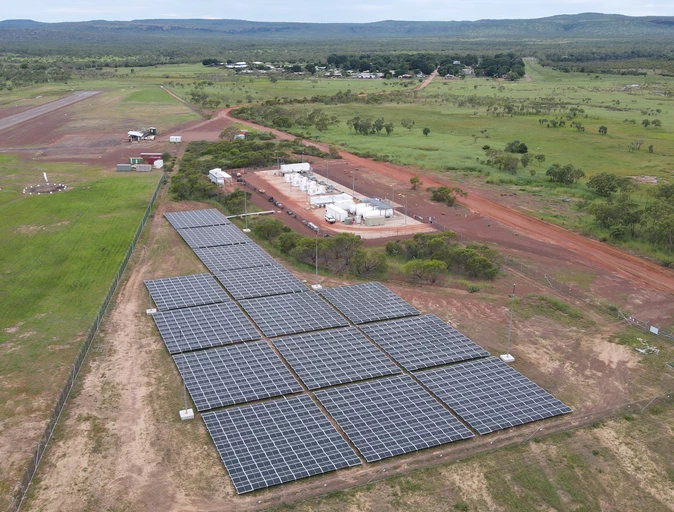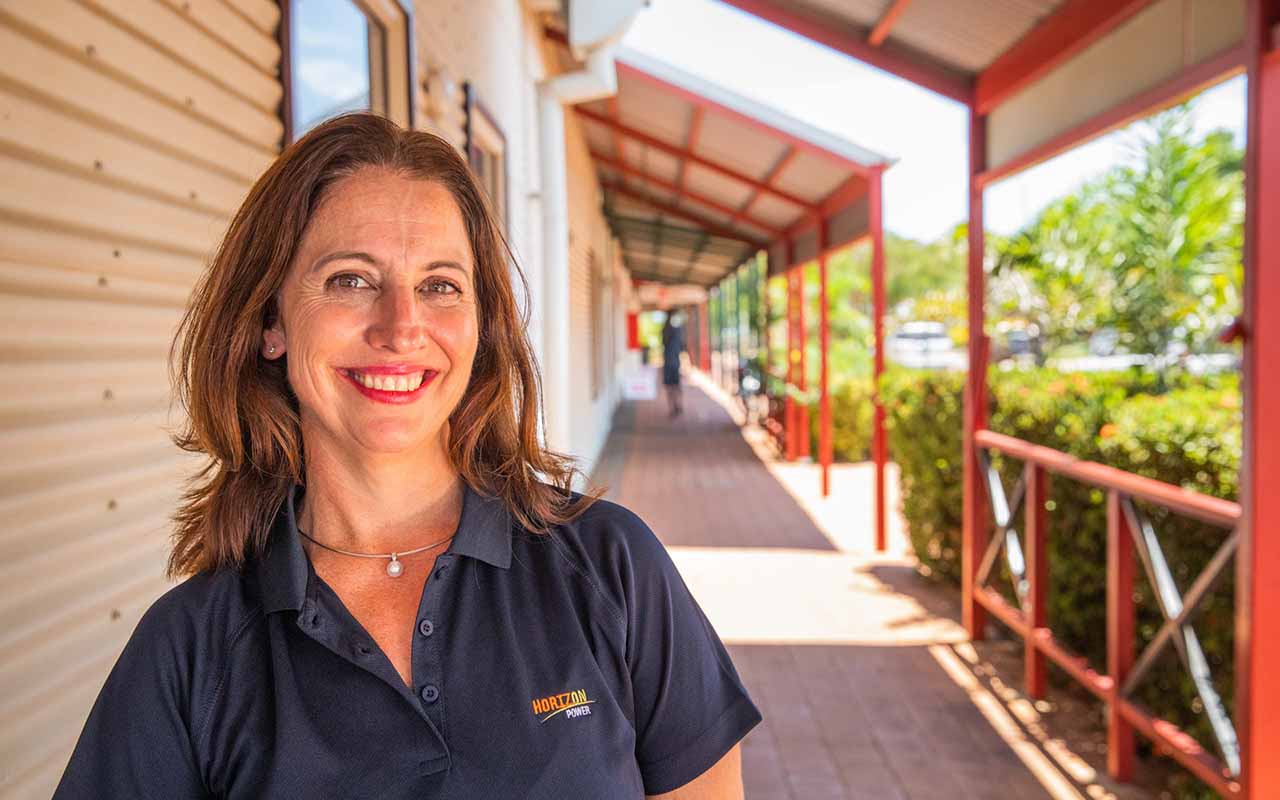
Community engagement
Communities are at the heart of our IRP framework which is why we invite as many residents and groups as possible to provide their feedback throughout the process.
We consider all aspects of a power system, including land availability and existing power infrastructure to ensure future energy solutions are aligned with the unique characteristics and interests of each community.
We also consider energy products and services that give customers opportunities to reduce their energy bills and progress the transition to a cleaner greener energy future.
A greener future
We are exploring ways to incorporate more renewable energy generation in our future energy systems. This is important as we reduce carbon emissions in line with the State Government's goal of net zero by 2050.
As renewable energy solutions require more land to operate on than fossil fuel power stations, we work closely with the local Shires, government agencies, Traditional Owners and Aboriginal Community Councils to identify suitable areas of land.


What's happening now?
Horizon Power is investigating potential energy solutions for Kimberley communities and their residents.
We understand our customer's concerns over affordable energy bills, greater access to rooftop solar and how the transition to a low carbon energy system will impact their community.
The end-to-end consultation, planning and assessment process is expected to take 18 to 24 months - and we'll keep you informed along the way.
The reference number for this invitation is EOIHPSR0335 Kimberley Future Energy System (FES) Project.
What's happening and when?
Here's a high level timeline of what to expect, subject to change as the project progresses.
April to July 2023
Complete
The IRP project team is formed, planning and preparation work begins.
Aug to Sept 2023
Complete
We're hosting local community sessions so you can learn more about the project, ask questions and provide feedback.
Aug 2023 to Nov 2024
Future energy systems options analysis
Financial assessment, market testing, engineering, land assessments, stakeholder engagement, project management, environmental and heritage due diligence activities will occur.
Nov to Dec 2024
Decision point
Horizon Power Executive will review the project's recommendations and make a decision on the path forward.
2025
Community update
We will update the community on the recommended future energy system pathway for the town.
2025 to 2026
IRP plan implementation
Includes return to market for detailed design and final generation solutions, commercial negotiations and approvals.
2026
Community update
We will update the community on the approved future energy system for each town.
2026 to 2028
Construction & commissioning
The future energy system and supporting infrastructure will be built and commissioned, providing long-term, reliable, safe and sustainable power to your town.
-
Why is Horizon Power looking at the Future Energy System for the Kimberley now?
Horizon Power is supporting the State Government's commitment to reduce public sector emissions by 80% by 2030 and to become net zero by 2050.
To achieve this goal, we are prioritising financial investment into decarbonisation of the towns that emit the highest levels of carbon emissions (CO2) being those powered primarily by fossil fuelled generators using gas and diesel. For the Kimberley, this includes Halls Creek, Broome, Derby, Fitzroy Crossing and Camballin/Looma.
Planning for a new energy system is complex and takes time. The energy generation solution also needs to be tailored to each town, so it’s important that we start engaging with local communities now. -
What is Integrated Resource Planning?
Integrated Resource Planning is a public process in which Horizon Power works together with our communities and stakeholders to identify and explore energy options to shape their future energy system.
We engage and inform local communities, Local Government Authorities, Traditional Owner groups and key stakeholders to determine long-term energy solutions that best meet their needs. This includes seeking support on acquiring land on which to build the generation facility. We work to balance the demand, reliability and future energy needs of our towns with the voices and opinions of those who help make it a community. -
What renewable sources will be considered for the Kimberley Integrated Resource Planning project?
A decarbonisation solution looks at cleaner and greener energy sources such as solar, battery storage and wind energy, as long as these sources are both technologically and commercially readily available. At the early stages of the project we will be assessing which of these generation types make sense and some generation types may not be part of the final solution.
As we progress the solution design for the future energy system, the technical considerations and economic viability may mean that some generation types cannot be part of the final solution.
Community engagement allows us to understand the appetite in each town for renewable energy sources. -
Do you intend to acquire land for this project?
Yes. The availability of land that can be used is a crucial factor in determining the future energy solution.
Renewable generation facilities such as a wind or solar farm require far larger footprints of land compared to a diesel- or gas-powered facility. The amount of land available determines the percentage of the town’s energy generated from renewable sources.
If we are unable to acquire land, we substantially reduce the amount of renewable generation options available for the town. -
How do you estimate the land sizes?
Land size is estimated based on the land required for new renewables. For example:
- Solar arrays require a footprint of approximately 2.5 Ha per MW generated
- Wind turbines require a footprint of approximately 30-40 Ha per MW generated
-
When are we likely to see this project delivered?
Planning for a future energy system is complex and takes time and community engagement to gather opinions and thoughts. If the recommended system is approved for delivery, construction would likely commence in 2026.
-
Will the delivery of this project mean less outages?
The future energy system will not have a direct impact on outages. Outages are primarily driven by unpredictable weather events and wildlife interactions.
-
Does this mean my power bills will reduce?
Your current power bills are set by tariffs that are heavily subsidised by the government. Introducing renewable energy generation as part of this project may reduce the cost of serving the town but will not directly affect your bills.
-
Will hydrogen form part of the future energy system solution?
We have considered hydrogen on several recent projects and will continue to explore hydrogen as a viable future energy solution. At the current time:
- It is too costly to produce hydrogen onsite for use
- There are no reliable suppliers to deliver hydrogen as a fuel source.
-
What is the working life of a wind turbine or a solar panel?
The typical working life of solar panels and wind turbines is 20 years. These renewable technologies are usually installed in conjunction with a battery energy storage system, which have an estimated working life of 10 years.
We can often undertake work to extend the life of assets, but this depends on site-specific conditions.
-
Does Horizon Power intend to recycle any of its assets such as solar panels, batteries, wind turbines?
During the procurement process, Horizon Power will assess contractor efforts in recycling materials. We investigate how a contractor sources, and disposes of, the renewable components to be used in the construction of a renewable energy facility.
-
What about the environmental impacts?
We are reviewing a number of land parcels to determine if they are suitable, including biological surveys that need to be undertaken 6-8 weeks after rainfall. Once the biological surveys are complete, our team will review the results to determine which sites are suitable for further shortlisting and how we can avoid, mitigate, minimise and manage our environmental impacts. Horizon Power is committed to reducing our environmental impact as we progress towards net zero.
Horizon Power acknowledges the Traditional Custodians throughout Western Australia and their continuing connection to the land, waters and community. We pay our respects to all members of the Aboriginal communities and their cultures; and to Elders past, present and emerging.
Aboriginal and Torres Strait Islander people are advised that this website may contain images, names or voices of deceased people.